The famous Ise Grand Shrine (Ise Jingu), located in Mie Prefecture, is home to the primary pilgrimage site for Shinto followers. During the Edo period, Shinto pilgrimages to the Ise Grand Shrine became popular and different routes were established across Japan. Today, these routes are remembered and preserved to serve as a piece of Shinto-Japanese history. Though most people no longer walk these roads, there are cities, towns, and villages where the pilgrimage traces can still be found. Tucked into the mountains of East Nara lies a portion of the famous Ise Honkaido in Mitsue. The Ise Honkaido served as one of the main routes to Ise Jingu from Yamato (Nara). In Mitsue, I was taken on a walking tour of the famous stops located within the village.
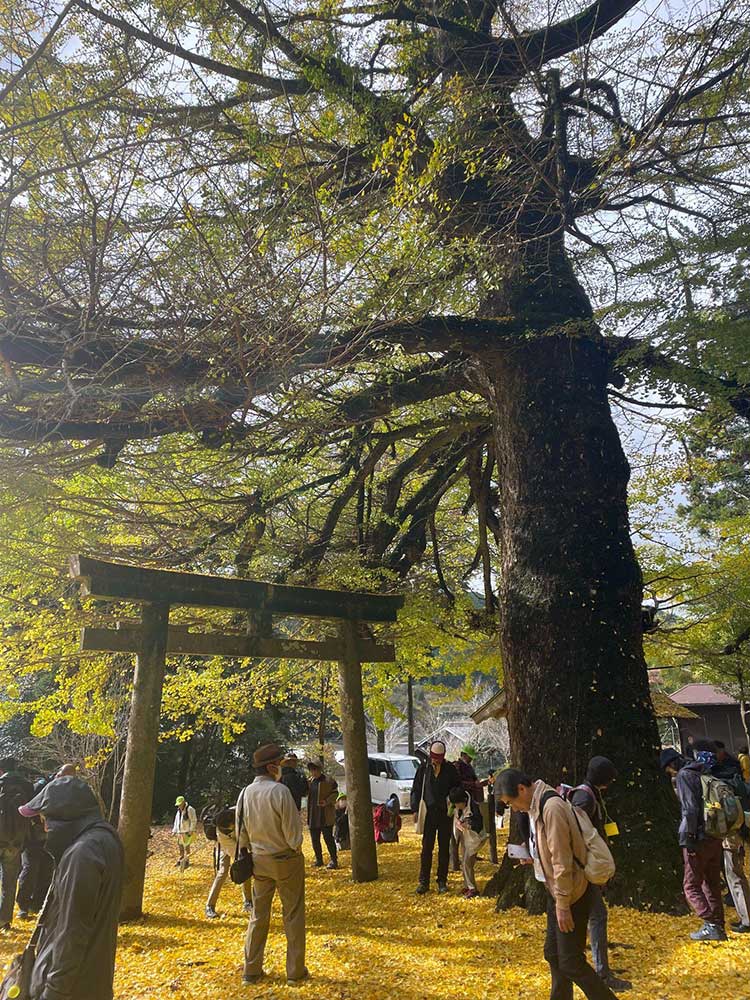
Our first stop was at Kasuga Shrine in Tsuchiyahara, Mitsue. Kasuga Shrine protects against calamities and brings good luck and success. The shrine also hosts a breathtaking 400-year-old ginkgo tree. This ginkgo tree produces a special yellow leaf which curls up when fallen, resembling a trumpet. Finding a curled leaf is said to be a good luck charm and even bring happiness! Finding one myself did indeed make me happy.
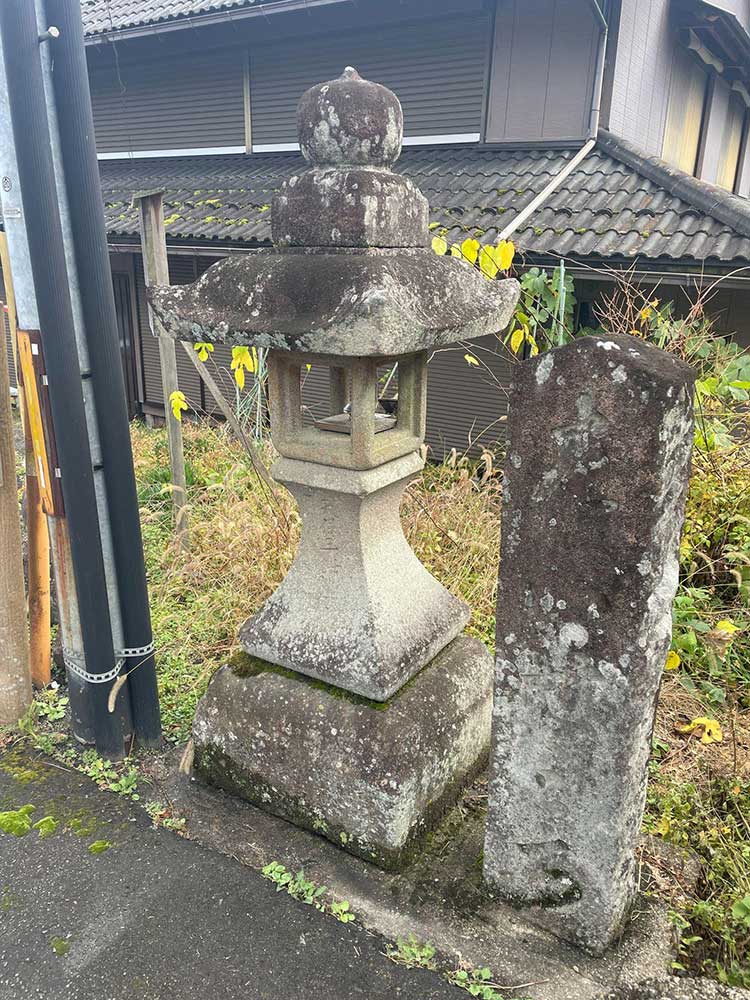
To get to our next stop our group had some walking ahead of us. Along our walk we were shown lanterns and smaller shrines located alongside the Ise Honkaido trail. Lanterns were used to light paths and inform wayfarers that they were heading in the correct direction.
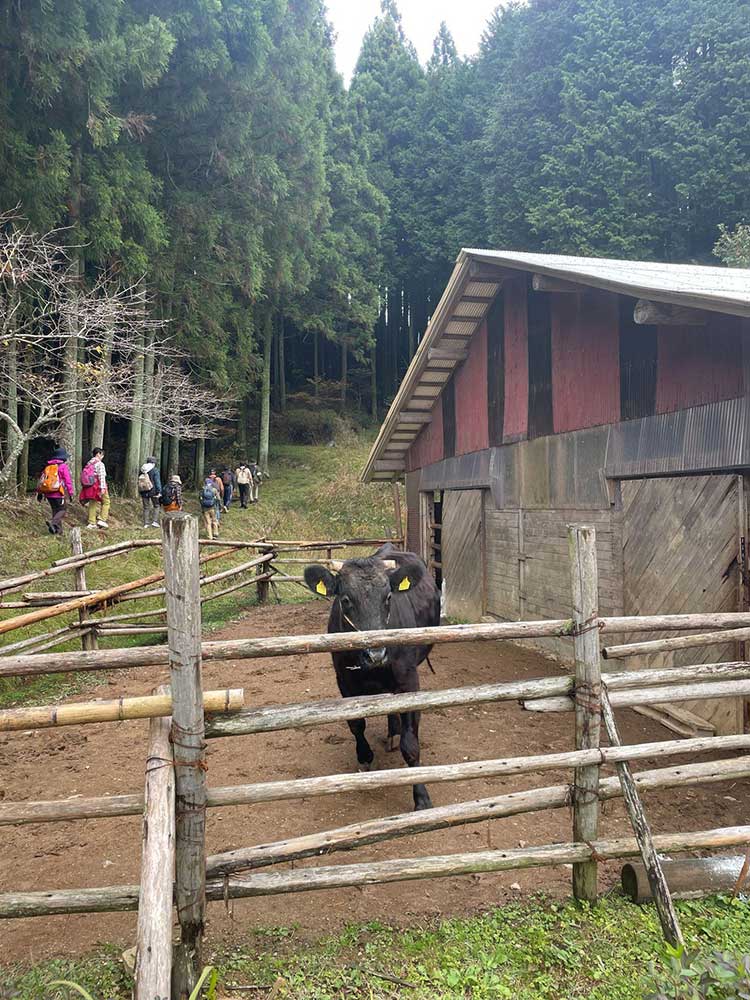
After a short walk, our group headed into the woods towards Sakura Path. One of the many rural trailheads along the Ise Honkaido. Before entrance, our group was greeted by a furry friend! The cow dashed around its enclosure with each passing person - it probably has never seen so many people at once so removed from the main road.
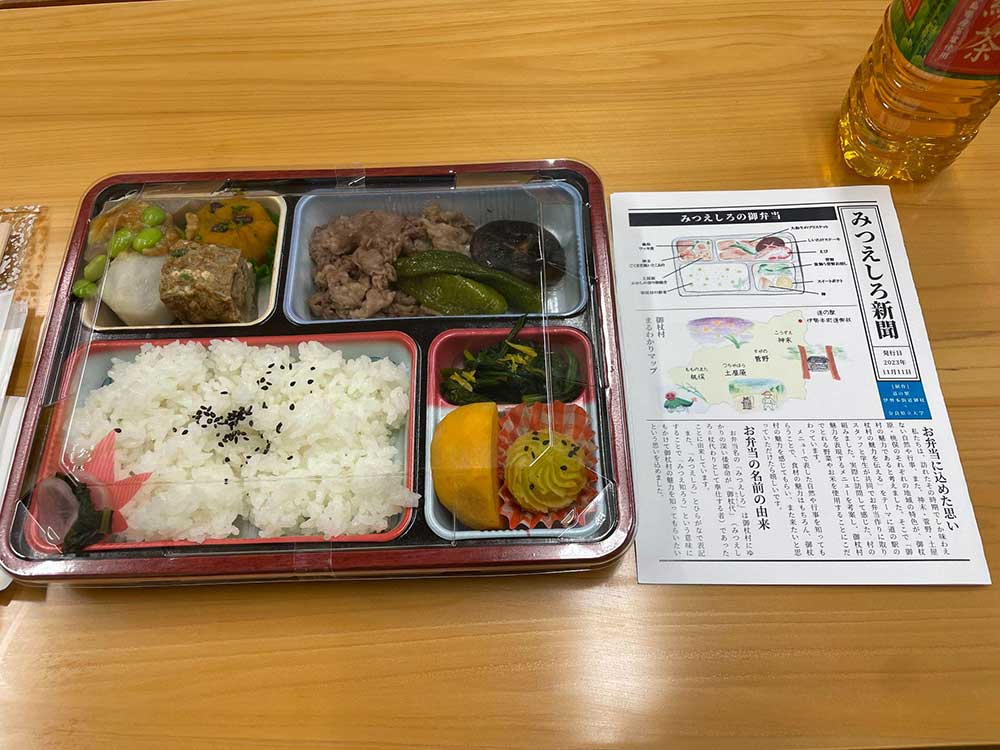
After crossing the Sakura Path and passing Mitsue’s village center, our group stopped for lunch. Bento was on the menu and we all enjoyed the same spread. The bento box contained a nice marinated beef, shiitake mushrooms, persimmons, konjac, and whipped sweet potato. Lunch came at a great time and provided me with the necessary fuel to carry on for the jam-packed second half of our walking tour.
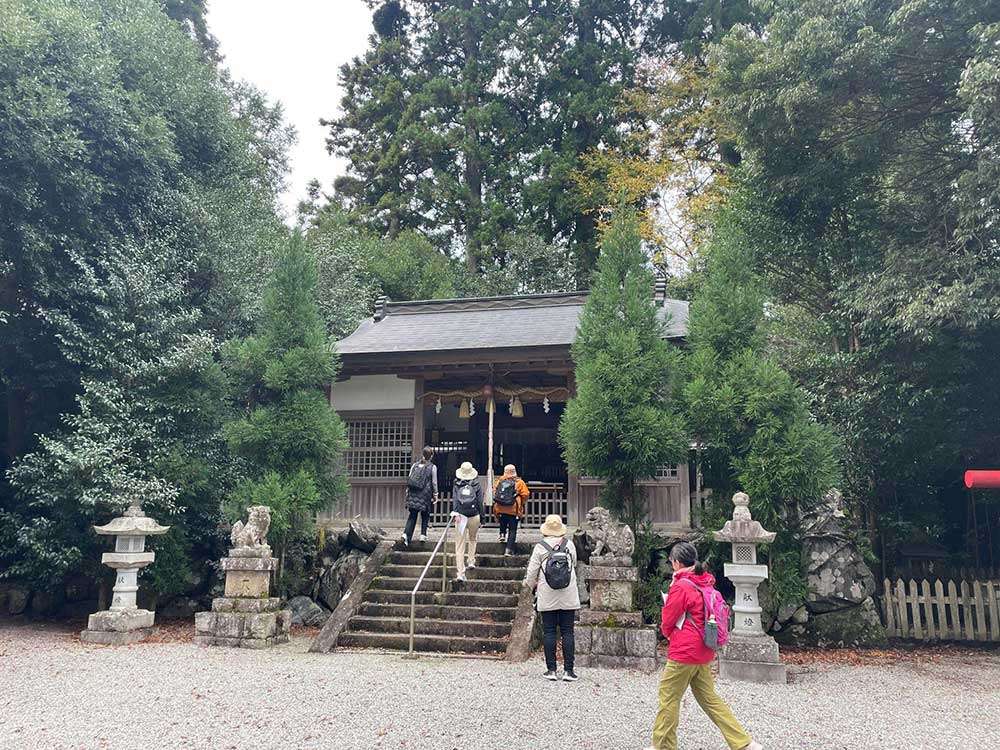
After lunch, we carried on our feet to Shisha Shrine. Shisha Shrine served as a stopping point for Yamatohime-no-Mikoto, Emperor Suinin’s daughter, who was charged with finding a place to permanently worship Amaterasu-Omikami (goddess of the sun). According to legend, Yamatohime-no-Mikoto washed her hands and rinsed her mouth in a basin within the shrine’s quarters. Our group spent some time exploring the grounds and then boarded a bus to the final stretch of Mitsue’s portion of the Ise Honkaido.
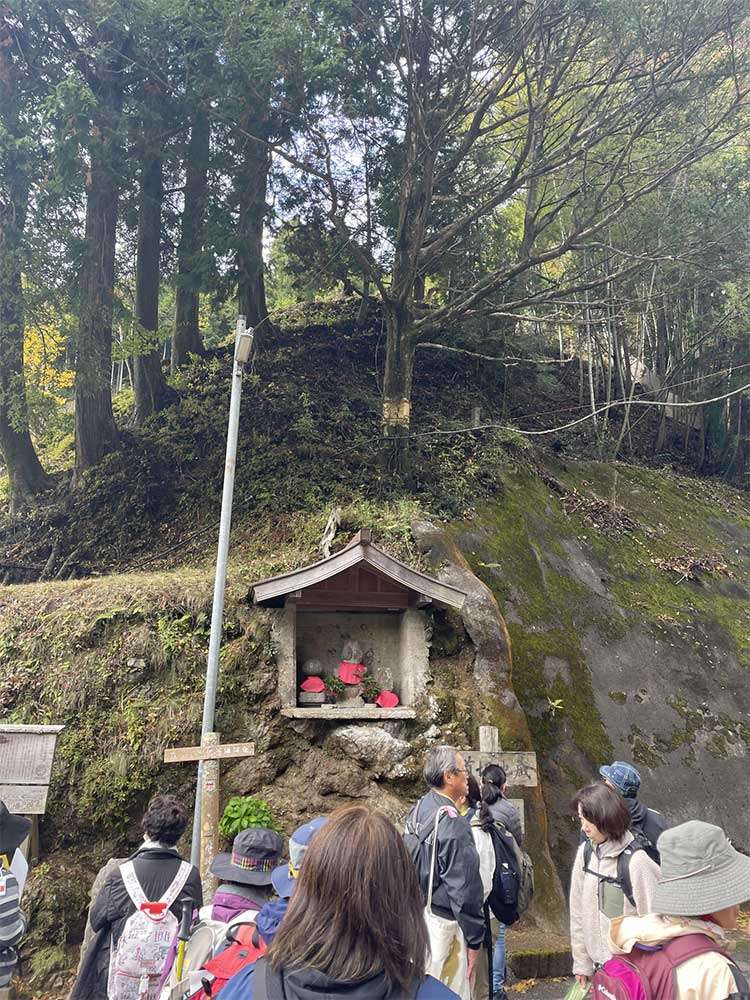
Before approaching many notable boulders which Yamatohime-no-Mikoto rested at, there was a fascinating statue missing its head. During the Meiji restoration and the subsequent Buddhism secularization, many Buddhist temples were abandoned or defaced. In particular, the once full-bodied statue housed in this shrine had its head removed. An interesting relic of history and a must-visit within Mitsue!
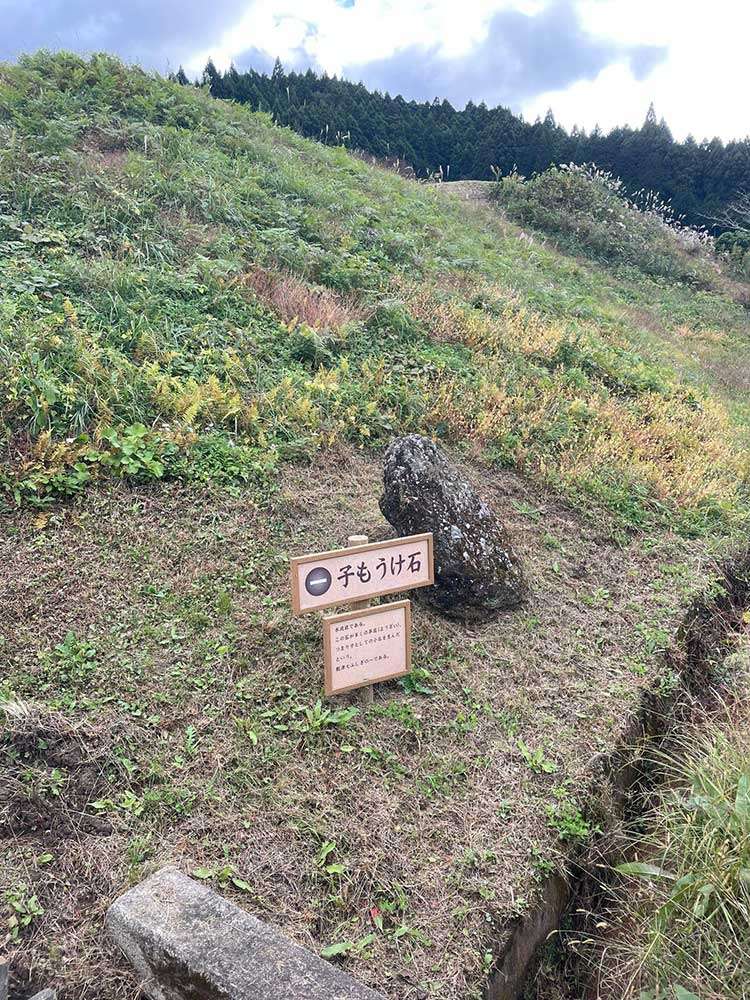
We stopped at this stone where this boulder is said to bless childrearing and childbirth. I wonder if Yamatohime-no-Mikoto prayed to it for fertility in ancient times. It is okay and encouraged to touch! When visiting this portion of the Ise Honkaido, be sure to bring a notepad to stamp at each stop.
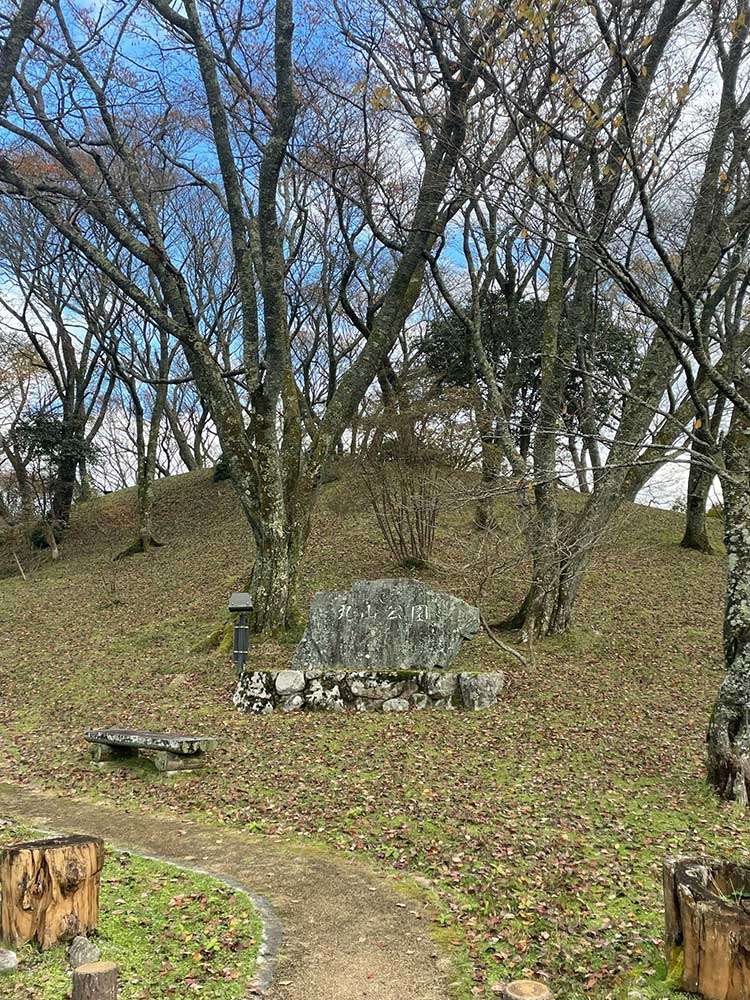
This round hilltop park is home to Himeshi Myojin and a wealth of cherry blossoms, serving as a great photo-op spot during the spring. To access Himeshi Myojin within the park, follow the parking lot to its end and find the descending guard rail. From there follow the steep staircase and you’ll arrive at a wonderful hidden gem within Mitsue.
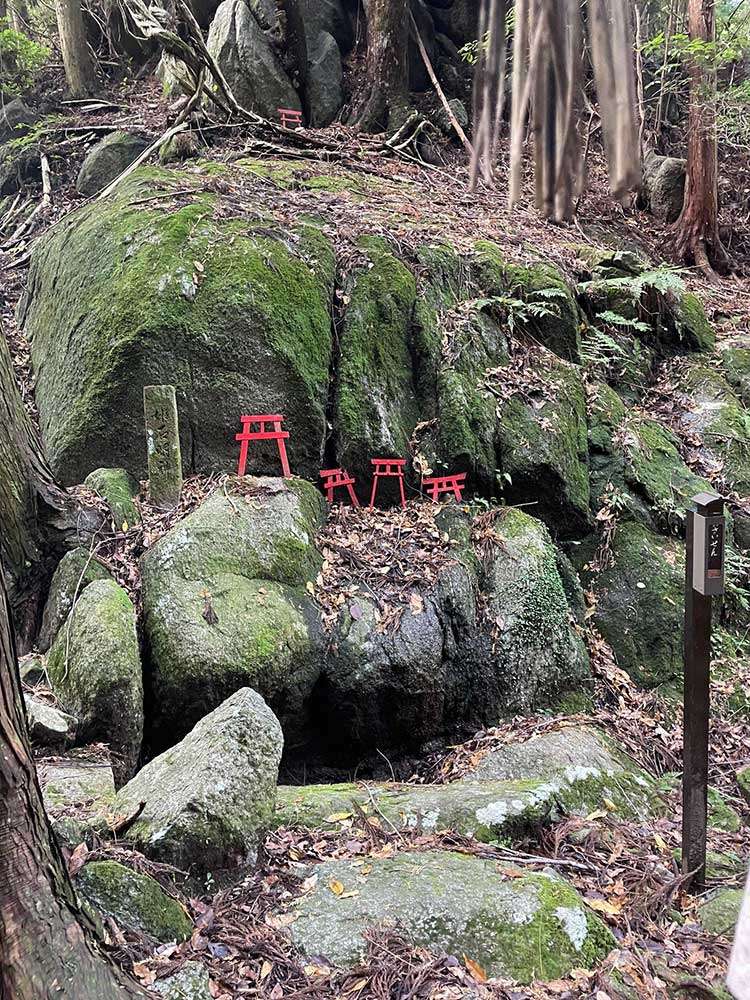
Once you arrive at Himeshi Myojin, you are greeted by a tall torii gate. Beyond the torii gate is a stone which supposedly resembles a woman’s buttocks. Can you see it? I’m still looking for the resemblance! During her journey, Yamatohime-no-Mikoto stopped here to pray for recovery from her gynecological problems. Visiting and praying at this site is said to help with marriage and aid in childbirth. It’s a beautiful, tucked-away shrine that is worth a visit. Odds are when you visit it will be quiet, which only adds to the atmosphere surrounding the shrine.
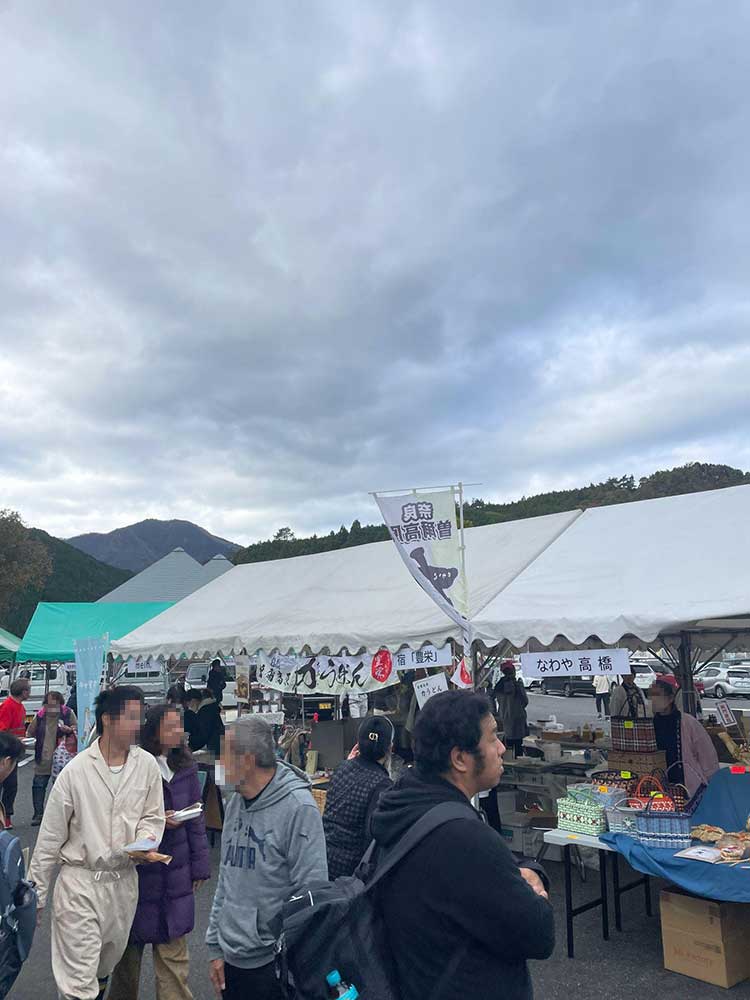
Finally, after visiting Himeshi Myojin and the various other sites dedicated to Yamatohime-no-Mikoto, our group made our final stop. Upon our arrival at Mitsue’s Michi-no-Eki (Roadside Station), there was a fall festival under way! Many local vendors, including chefs, craftsmen, and the like set up tables and tents selling various goods. I enjoyed skewered pork belly and a freshly brewed cup of coffee. Other goods included udon, oden, candy apples, woven bags, and wood-carven art. The festival was a welcomed surprise after a long day of exploring the incredible Ise Honkaido within Mitsue.
If you’re interested in seeing the Ise Honkaido in Mitsue, the drive from Nabari Station is about 40 minutes. Once in Nabari, you can rent a car near Nabari Station or rent a bicycle at Nabari Tourist Information Office at the station, if you would like to experience the beautiful winding roads between Nabari and Mitsue. If needed you can download a roadmap here. Enjoy!

